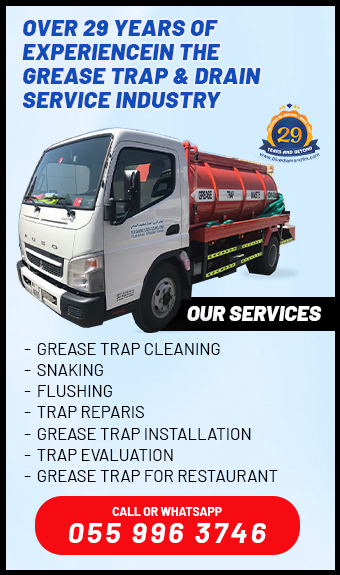Grease Trap Installation Guide: What UAE Restaurants Need Before Opening
Opening a restaurant in the UAE means juggling permits, fit-out, staff, and supply chains — but one technical requirement you can’t afford to miss is proper grease trap installation. A poorly specified or incorrectly installed grease trap risks blocked drains, municipal fines, foul odors, and even temporary closure. This Grease Trap Installation Guide walks you through Dubai and UAE expectations, sizing and type choices, the step-by-step installation process, common mistakes to avoid, cost considerations, and a final pre-opening compliance checklist so your venue opens on time and stays compliant.
Legal Requirements & Dubai Municipality Guidelines
What Authorities Require
Dubai Municipality and other emirate authorities require commercial kitchens to install approved grease traps or interceptors sized appropriately for their operations.
You will need to submit plans, equipment specifications, and sometimes shop drawings as part of the food premises approval and building permits.
Key Compliance Points
Use approved grease trap models and certified installers where required by the municipality.
Keep maintenance records, service logs, and waste disposal receipts available for inspection.
Follow local standards for trap placement, access, venting and overflow prevention.
Consult your local municipality’s building and sanitation guidelines early in fit-out planning to avoid rework.
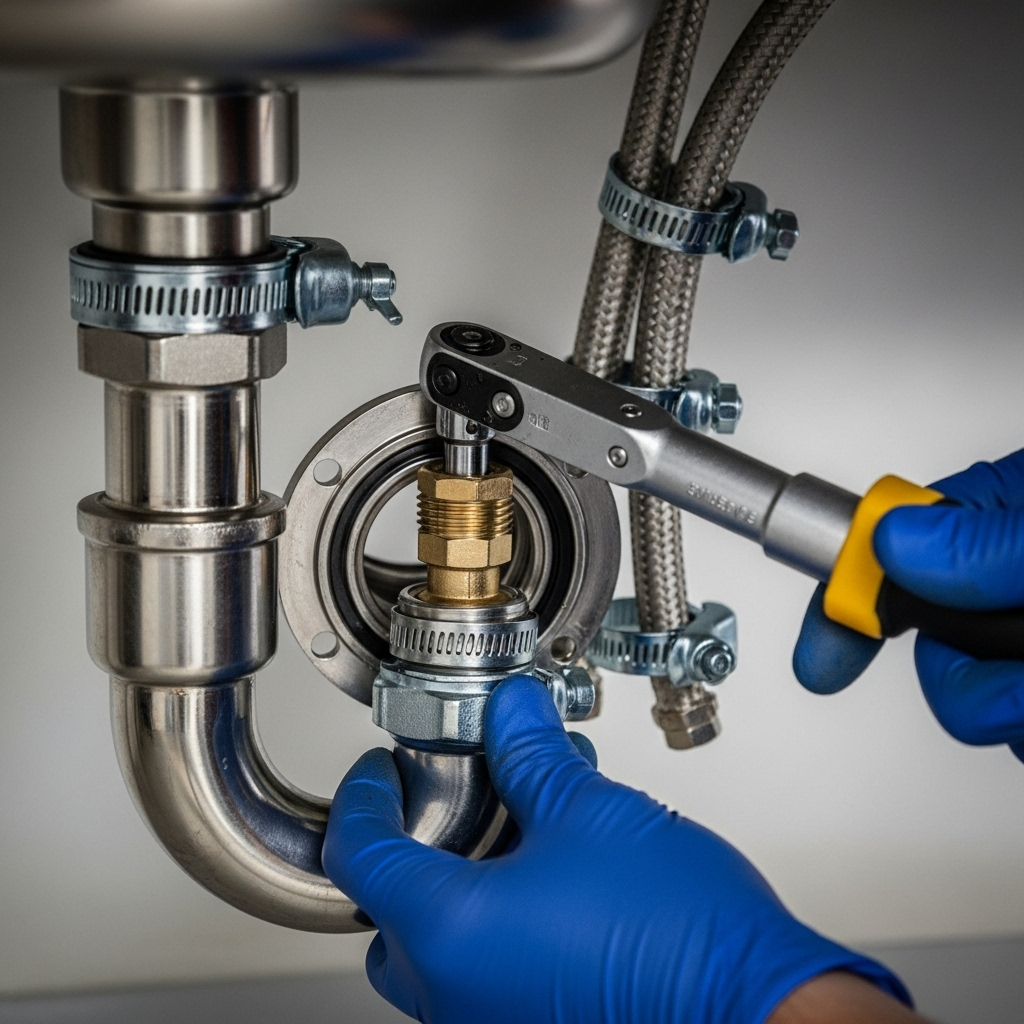
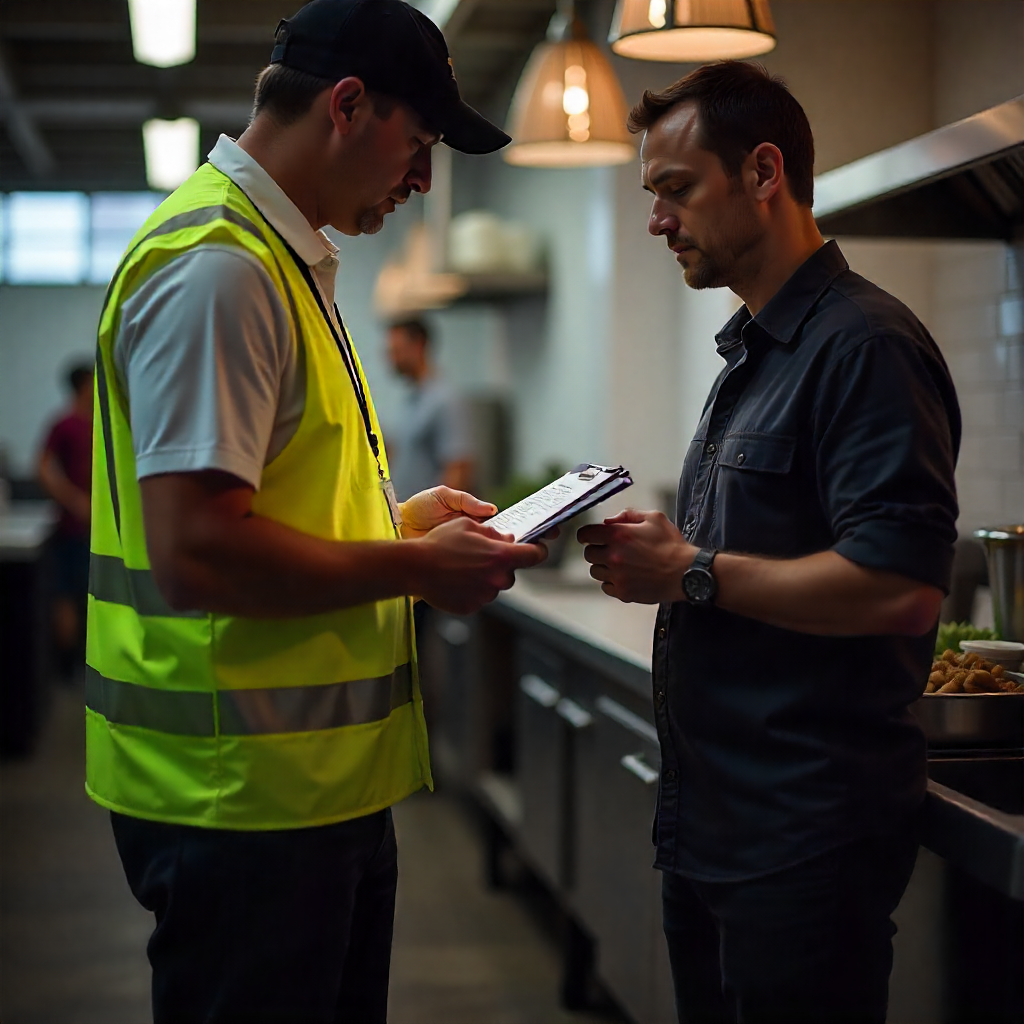
Assess Kitchen Output
Menu profile (deep frying, heavy sauces, or light prep) affects FOG volume.
Service volume (meals/day) and peak hour throughput determine required flow rate.
Grease Trap Types
Passive (in-line) grease traps — common for small operations; require frequent servicing.
Hydromechanical grease interceptors (HGI) — compact, under-sink units with better separation.
Gravity grease interceptors (GPI) — large capacity tanks (often external) suitable for high-volume or central kitchens.
Automatic grease removal units (GRU) — reduce manual handling and can lower maintenance frequency.
Location & Accessibility
Install where maintenance access is safe and straightforward (not behind walls or under immovable equipment).
Consider outdoor or below-floor interceptors for large facilities; indoor under-sink units are better for smaller kitchens.
Working with a consultant or experienced contractor during this stage ensures the chosen solution matches operational needs and municipal rules.
Factors to Consider When Selecting Grease Trap Size & Type
Step-by-Step Grease Trap Installation Process
1. Site Survey & Specification
A certified technician or engineer visits the site, reviews kitchen layout, equipment, and expected flow to specify trap type and size.
2. Permit & Plan Submission
Submit chosen system specifications and site layout to your local municipality as part of food premises or building approvals.
3. Prepare Location & Plumbing
Ensure proper floor gradients, access hatches, ventilation, and structural accommodation (for large external interceptors).
4. Professional Installation
Licensed plumbers or certified installers fit the trap to manufacturer and municipal requirements. This includes correct inlet/outlet fittings, baffles, and venting.
5. Commissioning & Testing
Pressure tests and flow checks verify there are no leaks and the unit performs to specification. Obtain signed completion paperwork.
6. Documentation & Handover
Receive operation manuals, maintenance schedules and a compliance certificate (if provided). Store these for inspections.
Common Mistakes to Avoid During Installation
- Wrong sizing — undersized traps overflow; oversized units may be inefficient.
- Poor placement — traps hidden behind immovable fixtures or with restricted access make servicing dangerous or impossible.
- DIY installs — non-certified work often fails municipal inspections and voids warranties.
- Ignoring waste handling — lack of approved disposal arrangements for pumped FOG can breach regulations.
- Skipping commissioning tests — untested systems may leak or fail under real loads.
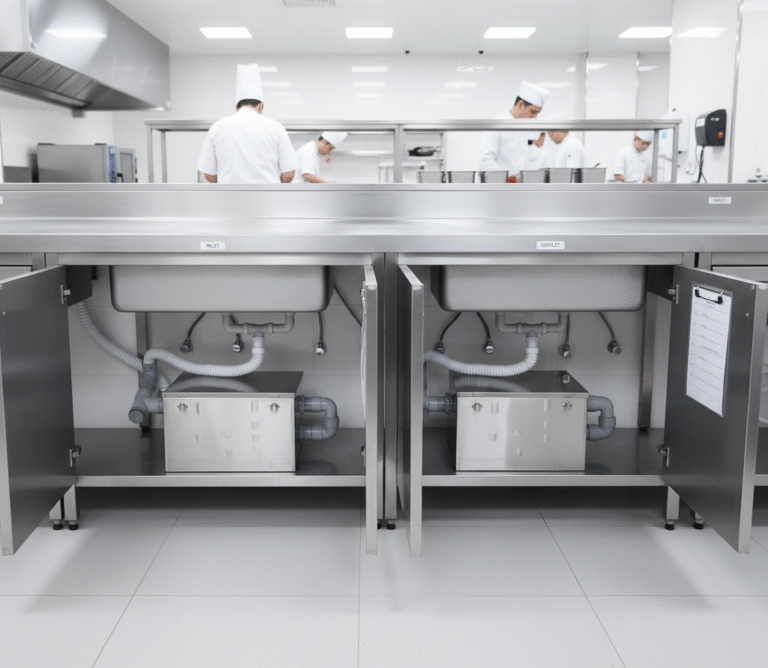
Long-Term Benefits of Proper Grease Trap Installation
Regulatory compliance — timely approvals and fewer inspection issues.
Operational continuity — fewer blockages and emergency repairs that disrupt service.
Lower lifetime costs — correctly installed systems require less reactive maintenance.
Improved hygiene & customer experience — fewer odors and cleaner kitchen environment.
Sustainability potential — properly segregated FOG can be recycled, supporting corporate sustainability goals.
Budget & Cost Considerations
What Impacts Cost
Type & capacity of the interceptor (under-sink vs large external tank).
Complexity of installation (cutting slabs, trenching, lifting large tanks).
Accessory requirements (pumps, vents, access covers).
Municipal approvals and third-party inspection fees.
Cost Saving Tips
Factor total cost of ownership (installation + routine maintenance + FOG disposal) rather than lowest upfront price.
Invest in a maintenance contract to avoid emergency call-outs.
Consider GRUs or automatic systems for high-volume kitchens to reduce manual labor and spill risks.
Final Pre-Opening Compliance Checklist
- Grease trap selected based on kitchen output and municipality guidance.
- Installation completed by a licensed contractor and commissioned.
- All permits, drawings, and approval documents submitted and accepted.
- Maintenance schedule established; service provider contracted.
- Waste disposal arrangements (licensed hauler and approved facility) in place.
- Staff trained in daily best practices (straining solids, not pouring oil down drains).
- Operation manuals and maintenance records filed for inspections.
Conclusion
This Grease Trap Installation Guide is your roadmap to safe, compliant and efficient kitchen operations in the UAE. Proper planning, professional installation, and an ongoing maintenance program protect your business from fines, downtime, and reputational damage.
Ready to get compliant before opening day? Contact our certified grease trap specialists for a free site assessment and tailored installation plan — from sizing and permits to testing and maintenance contracts. Ensure your restaurant opens on time and stays operational with confidence.
Most Frequently Asked Question
Start with a site survey and flow assessment to determine the correct trap type and size for your kitchen’s output.
Dubai requires approved systems sized for the operation; check local guidelines and use certified installers to ensure approval.
Service frequency depends on usage — commonly every 1–4 weeks for high-use sites; your installer should provide a maintenance schedule.
DIY installs risk non-compliance; the Grease Trap Installation Guide recommends licensed professionals for safe, approved installations.
Keep manufacturer manuals, commissioning test results, service logs, and waste disposal receipts for municipal inspections.
By advising correct sizing, professional installation, and scheduled maintenance, the guide helps prevent blockages, fines, and emergency repairs that are costly
Our Services
Our step-by-step guide simplifies the cleaning process, ensuring a hassle-free experience while keeping your traps clean.
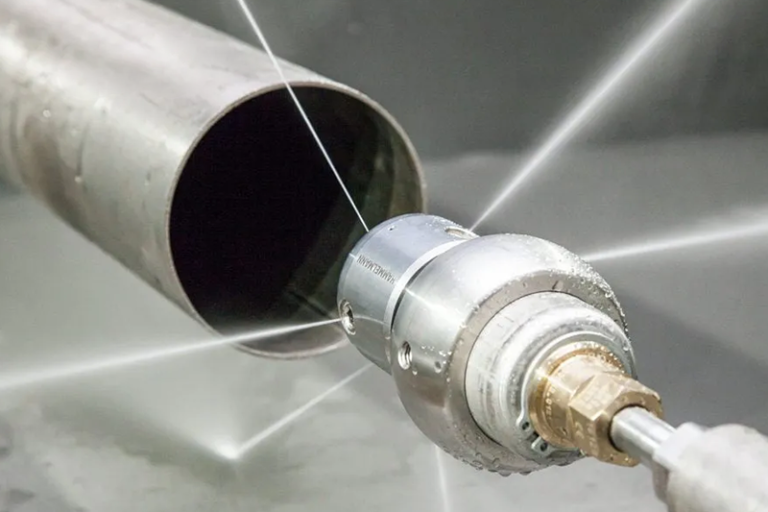
Drain Line Jetting
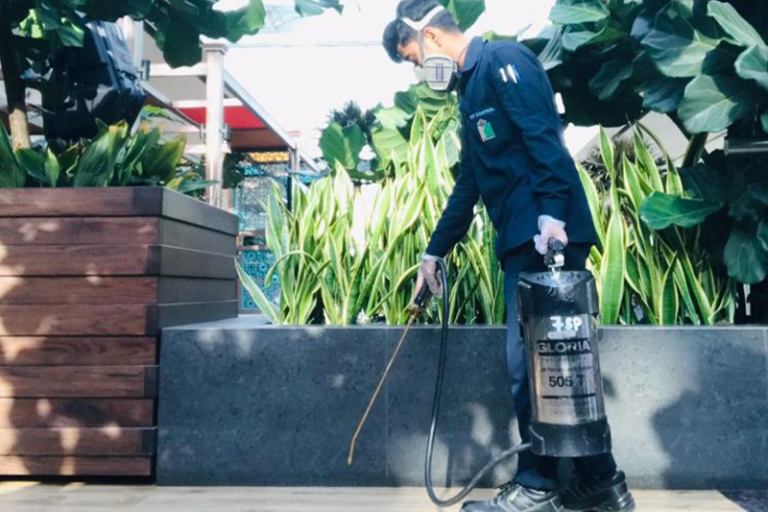
Pest Control Service
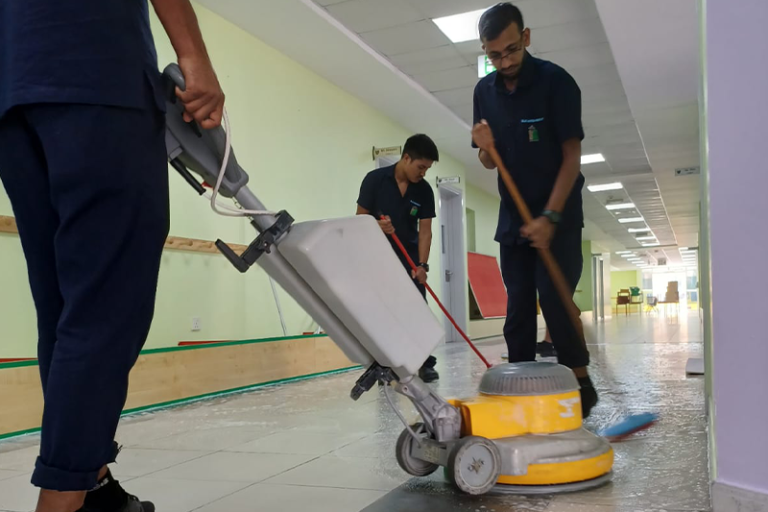
Deep Cleaning
business
Our Working Process
Let’s start the journey towards success and enhance revenue for your business. Take your company to the next level.
Book An Appointment Today
Blue Diamond would like to hear from you. if you have business inquiries. Get in touch with us.





